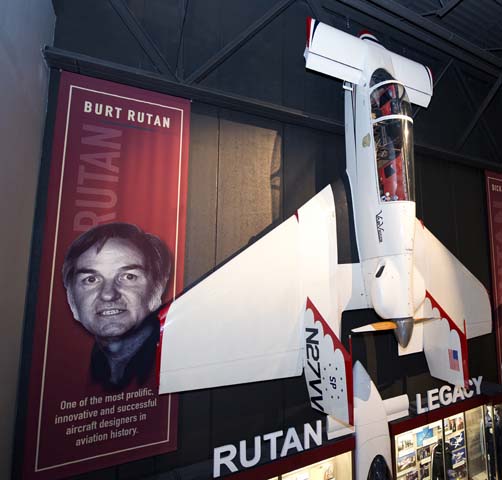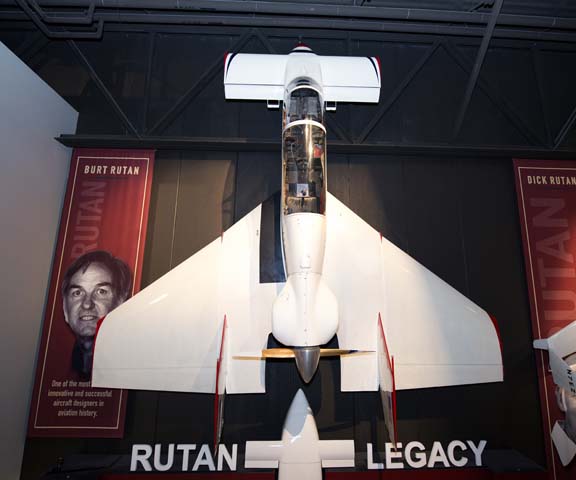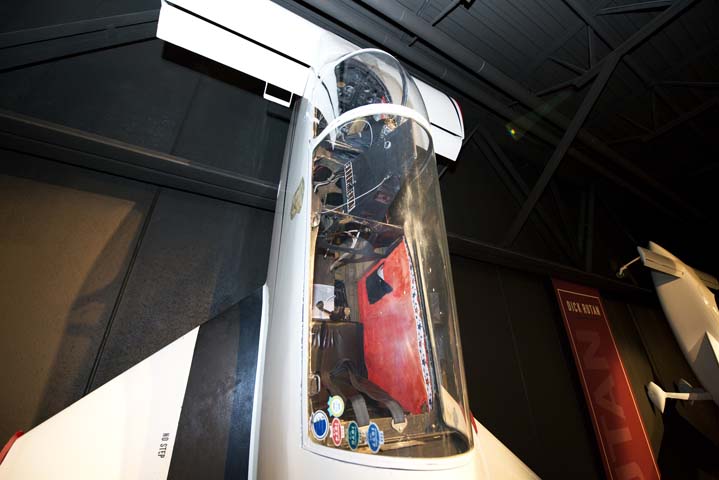1972 Rutan VariViggen - N27VV
Location: Innovations
Burt Rutan began the design for the VariViggen while he was still a student at Cal Poly in 1963. The construction of the VariViggen in the garage of his Lancaster, California, home required nearly four years, having begun in 1968 after extensive wind tunnel tests and model experiments dating back to 1963.
Burt performed model experiments by suspending a true, one-fifth scale model on a specially built test rig attached to the luggage rack on top of his station wagon. The rig allowed measurement of air speed, angle of attack, lift, drag, sideslip, side force, roll moment, elevator-aileron-rudder positions, and an extra data channel which permitted measurement of hinge moment or structural load.
In designing the prototype, Burt decided against going for optimum high speed. Instead, he wanted plenty of wing area for safe, docile, low-speed flying qualities. Burt settled for a slab-sided fuselage and flat-bottomed wings for ease of jigging and building. The main structure was made of plywood and was easy to build using normal techniques. Spruce was used for spars and longerons, and aircraft plywood for the formers, ribs, and skin. The plywood skin was covered with lightweight Ceconite and finished with dope followed by polyurethane.
The prototype had a roomy cockpit for two pilots in tandem which incorporated modern fighter-cockpit layout and afforded really terrific visibility from both seats. The fully retractable landing gear was operated electrically as were the trim bungee and the wing reflex. The VariViggen was powered by a 150-hp, four-cylinder Lycoming engine.
Burt began testing his VariViggen in April 1972 and spent nine weeks test flying the prototype, improving the engine operation, gathering stability and performance data, and adding a new cowling and spinner. By the time the VariViggen landed at the convention in Oshkosh in 1972 the prototype had logged 75 hours.
Burt used the VariViggen as his personal airplane, logging over 150 hours in the prototype. He flew the airplane on a five-day vacation to the west coast, a trip that totaled about 3,000 miles with stops at 16 airports. After many hours of flying the prototype for personal and demonstrational reasons, Burt decided to move on to other designs. Burt donated the prototype VariViggen to the EAA AirVenture Museum in 1988 and the airplane is now part of the diverse collection of Rutan aircraft in the museum.
Aircraft Make & Model: Rutan VariViggenLength: 16 feet 10 inches
Wingspan: 19 feet
Height: 6 feet 2 inches
Gross Weight: 1,700 pounds
Seats: 2
Powerplant: Lycoming O-320-AZA
Horsepower: 150 hp




